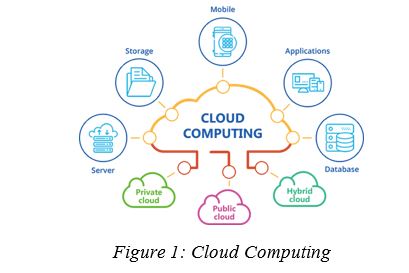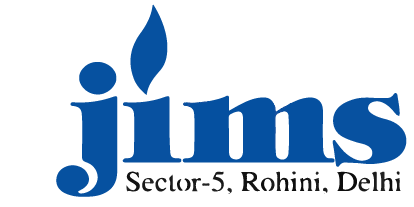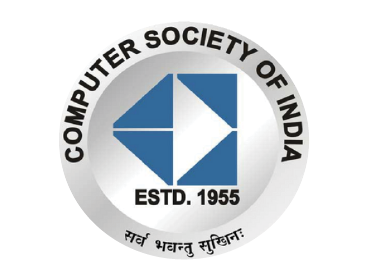Cloud Computing
Faculty Mentor:
Ms. Ankita Sharma
Student Name:
Simran Rajput (MCA-1 st Year)
Sonali Jain (MCA-1 st Year)
ABSTRACT
The article hits two boards in one line, that is, what is CLOUD COMPUTING and a genuine conviction of what is disseminated processing & clearing the perplexities of using CLOUD COMPUTING.
Cloud computing is defined as technological advancement that emphasizes on the way in which we map computing system, develop applications and leverage existing services, compute potentially, storage, networking, and information technology infrastructure. Resources are made accessible through the internet.
1. CLOUD COMPUTING
Cloud computing is a term for characterizing the facilitating administration over the internet. Cloud computing implies securing and getting to your data, records and tasks over the web instead of your pc hard drive. Cloud computerizes your data at whatever time, anyplace utilizing any service over the internet. It gives you opportunity of doing things with more abilities power & straightforwardness.

2. CLOUD SERVICE DELIVERY MODELS
The cloud service delivery models can be categorized into three broad categories:
Software as a Service (SaaS)
Platform as a Service (PaaS)
Infrastructure as a Service (IaaS)
2.1 SOFTWARE AS A SERVICE (SaaS)
Software as a Service (SaaS), is a model for allocation of software where a user can access data over the internet. In this model, the software provider host and retain the servers, databases and code that comprise an application.
Characteristics of SaaS
The user is not required to have knowledge of the back-end infrastructure.
Scalable services or resources over the web and well defined APIs.
SaaS provider manage the complete application stack.
Benefits of SaaS
The client can also access services without installing the software on their device.
SaaS provider look after identifying and fixing the bug.
With the help of centralized cloud, software updates are made simpler.
The automation of technology updates.
Limitations of SaaS
Malware attacks can affect the use of SaaS service in web browser.
Proper security mechanism might require third-party involvement.
2.2 PLATFORM AS A SERVICE (PaaS)
Platform as a Service (PaaS) is a type of cloud computing service delivery model that provides platform and a solution stack as a service which include resources such as, operating system, programming language, compiler, run-time environment, servers like database server, web server, etc. PaaS is most portable for application developers.
The user can subscribe for the required platform, configure, and setup the platform depending upon the time required.
Characteristics of PaaS
It provides built-in scalability, web service interface and security to connect other applications outside the PaaS.
It provides common packages/services for network, payment integration, and databases.
It uses multi-tenant model for multiple concurrent users with appropriate scalability.
Benefits of PaaS
Facilitates working with multiple platforms.
The users are authorized to develop and up gradation of complete application.
PaaS automatically takes care of the applications dynamic resource requirement.
Limitations of PaaS
While acquiring PaaS offerings, a secure aware applications must be taken as a necessary measures such as, secure connection and encryption.
Customization of underlying hardware and software may be required.
Migration from one PaaS vendors' application to another PaaS vendor will create some problem
Some of the applications developed may be local while others are from the cloud; which may increase the complexity.
 Figure 2: Cloud Service Delivery Models
Figure 2: Cloud Service Delivery Models
3 INFRASTRUCTURE AS A SERVICE (IaaS)
Cloud infrastructure model, known as infrastructure as a service, is a self-service model for accessing, monitoring and managing remote data center infrastructure, such as, compute storage (virtualized or bare metal), networking and networking services (e.g. firewall).
Infrastructure as a service (IaaS) comes in all different shapes, sizes and colors. There are 8 types of IaaS providers
Computing
Enterprise IT
Test/ Development
Cloud storage
Resource sharing
Telecom
Wholesale vending
High performance computing
Characteristics of IaaS
Advance reservations can be made for resources for a certain duration of time.
To cater the need of scalability and provisioned dynamically, elasticity is implemented.
In order to enhance the availability and responsiveness, data centers are geographically distributed around the globe.
Benefits of IaaS
The IaaS can be utilized by the developers to develop and test their applications on multiple environment.
No need to purchase suitable dedicated servers.
The software launched on IaaS can be upgraded by the user.
The consumer can maintain and upgrade the tools and database system installed on IaaS.
Limitations of IaaS
The software can be run in the service providers infrastructure and therefore, all of the vulnerabilities of such legacy software can be exposed to other users.
The virtual machines may become out of date with respect to the security updates.
3. CLOUD DEPLOYMENT MODELS
PRIVATE CLOUD
The private cloud can be defined as cloud computing services furnished over either a private network or the internet, and solely to a specific user or organization. The private cloud deployment model is best suitable for businesses with uncertain computing needs that involves direct control over their environments.
When an organization appropriately implements the private cloud, it can provide benefits, such as scalability, user self-service, but can also bring some complications into an organization.
PUBLIC CLOUD
The public cloud is a classic model, where services or resources are dynamically equipped on self-service basis over the internet from a third party provider who charges the user on pay-per-use basis.
The provider owns and maintains compute resources and infrastructure that user access over the internet. It diminishes the need for an organization to invest in and retain their own on-premises IT resources. Security of data is the major concern of some organization, the provider offers security, such as encryption, recognize and access management tools.

HYBRID CLOUD
A hybrid cloud can be defined as a composition of different cloud types from different service providers. Both on-premises resources and off-site servers are required for the hybrid cloud architecture. The hybrid cloud facilitates the capability and capacity of a cloud service by means of aggregating, integrating and customizing it with other types of cloud.
This cloud deployment model takes the advantage of the scalability and cost-effectiveness of a public cloud without revealing applications and data beyond the corporate intranet.






